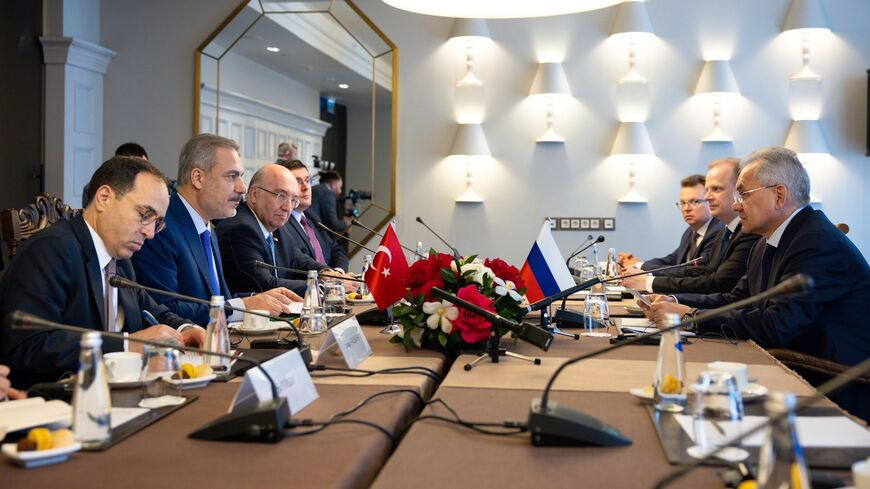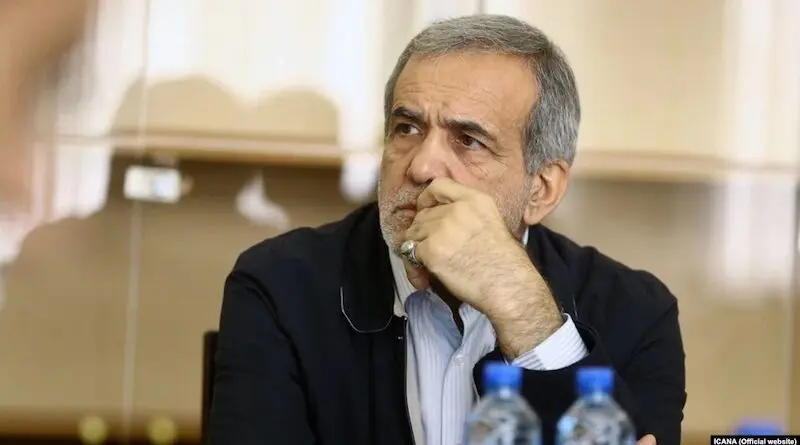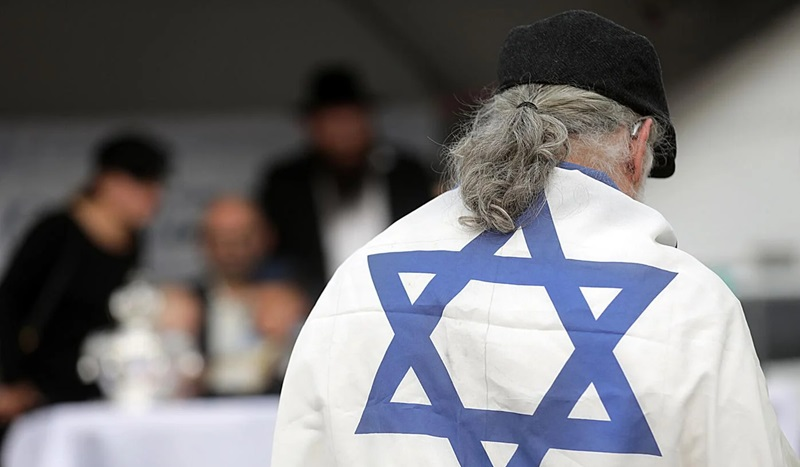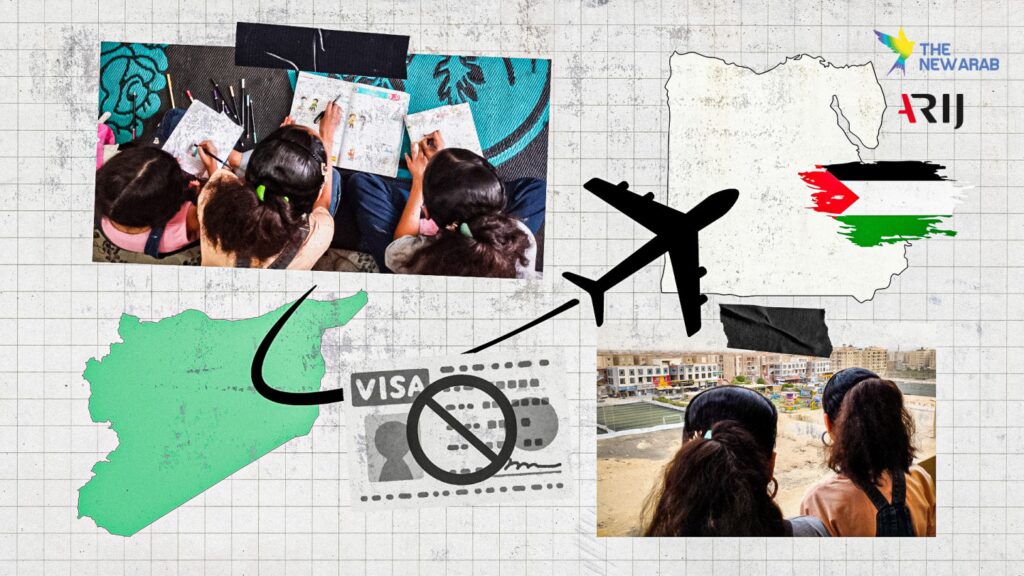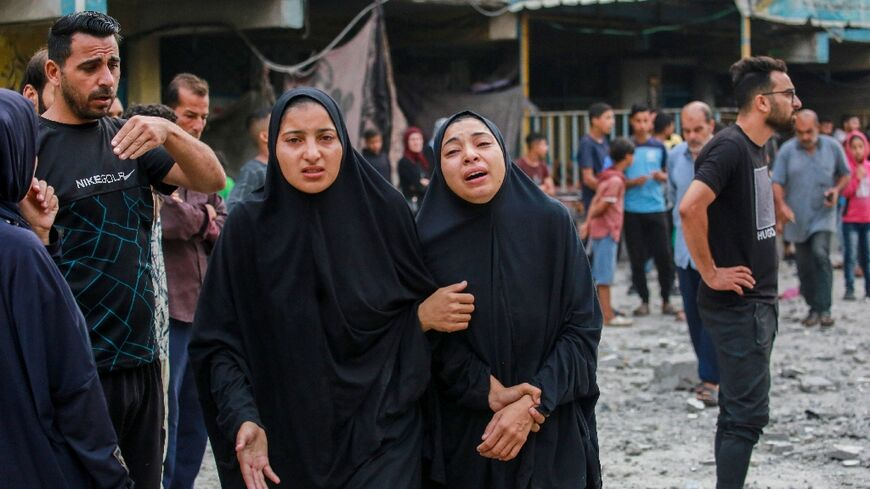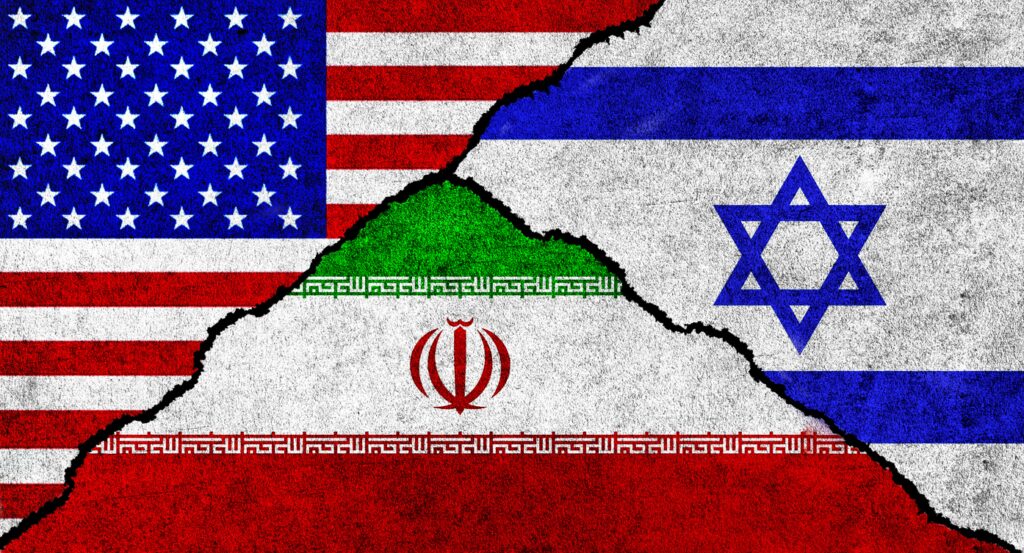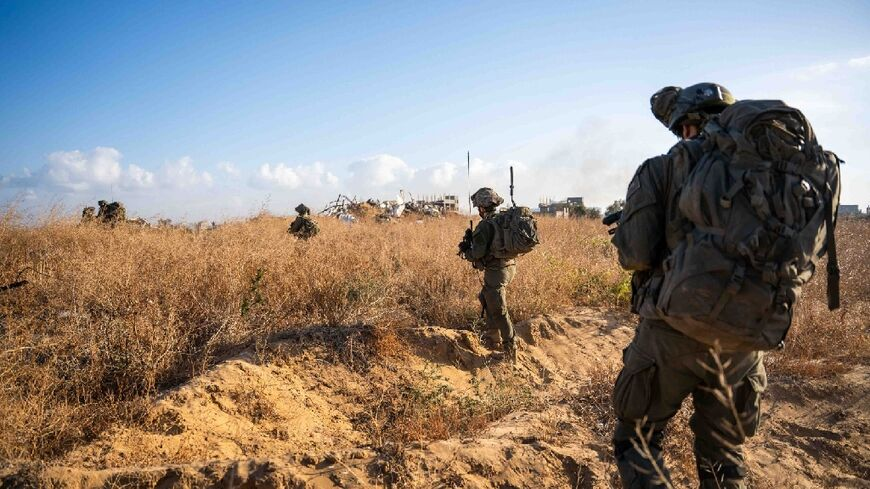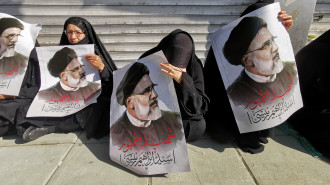
«La manipulation actuelle des médias aux États-Unis est plus efficace qu’elle ne l’était dans l’Allemagne nazie, car ici nous prétendons avoir toute l’information nécessaire. Cette erreur empêche les gens d’accéder à la vérité». (Mark Crispin MILLER, professeur de journalisme à l’université de New York)
Introduction
L’OMS (Organisation mondiale de la Santé) fait la pluie et le beau temps sur notre planète en matière de santé publique et la plupart des gouvernements se réfèrent à ses nombreuses recommandations.
Or, il y a quelques années, Bertrand Deveaud, journaliste, et Bertrand Lemennicier, professeur agrégé d’économie, ont enquêté à travers le monde sur cet organisme et ont consulté de nombreux rapports officiels et confidentiels pendant deux ans. Ils en ont conclu que l’OMS ne serait plus que le bateau ivre de la santé publique et naviguerait «sans maître à bord ni objectifs clairs sur un océan de corruption et d’inefficacité»2. Une série d’articles publiés à la même époque dans The British Medical Journal et dans The Lancet décrivaient l’Organisation mondiale de la Santé comme une institution corrompue et à bout de souffle.
L’OMS et ses «partenariats privés»
À l’origine, l’OMS était censée ne recevoir ses fonds que des gouvernements des pays membres des Nations unies, mais depuis quelques années, afin d’augmenter ses capitaux, l’OMS a mis en place ce qu’il appelle un «partenariat privé» qui lui permet de recevoir des aides financières d’industries privées. Mais quelles industries ? Bien évidemment la Mafia pharmaceutique et ses amis qui bénéficient à présent de ce que l’on nomme «une porte ouverte sur un tapis rouge» à Genève. Depuis lors, sa crédibilité, sérieusement entamée, ne s’est guère améliorée, et son indépendance est plus que controversée à cause de son manque total de transparence sur les preuves scientifiques étayant ses recommandations et sa collusion avec les multinationales industrielles. Il est évident qu’au niveau mondial les affaires et la politique influencent fortement la santé.
Le 22 janvier 2007, Alison Katz, une chercheuse qui a passé 17 ans à l’OMS, a adressé une Lettre ouverte à la nouvelle directrice de l’agence, la Chinoise Margaret Chan, accusant l’organisation de «corruption, népotisme, violation des statuts et inefficacité du contrôle interne», et concluant que «l’OMS est devenue une victime de la mondialisation néo-libérale». Elle dénonçait «la commercialisation de la science et les liens étroits entre l’industrie et les institutions académiques» et la science «corporatiste» privée, et estime que «l’OMS doit être le leader d’un mouvement pour transformer la façon dont est conduite la recherche scientifique y compris ses sources de financement, ainsi que l’acquisition et l’utilisation des connaissances» et que les fonctionnaires internationaux n’ont pas le droit de «ne pas savoir».
Les Docteurs Andrew Oxman et Atle Fretheim, du Centre norvégien de la connaissance des services de santé, et le Dr John Lavis, de l’Université McMaster au Canada, ont interviewé des responsables de l’OMS et analysé ses différentes recommandations. Andrew Oxman estime qu’il «est difficile de juger de la confiance qu’on peut avoir dans les recommandations de l’OMS si on ne sait pas comment elles ont été élaborées». «Nous savons que notre crédibilité est en jeu», a admis le Dr Tikki Pang, directeur de la recherche de l’OMS. «Le temps qui presse et le manque d’information et d’argent peuvent parfois compromettre le travail de l’OMS». Des responsables de l’organisation ont aussi reconnu que, dans bien des cas, la preuve censée être à l’origine d’une recommandation n’existait pas.
Sans frein ni limite
Le Dr Oxman a critiqué l’OMS d’avoir son propre contrôle de qualité. Quand ses avis de 1999 sur le traitement de l’hypertension artérielle ont été critiqués, notamment pour le prix élevé des médicaments recommandés sans preuve d’un bénéfice supérieur à celui de produits moins chers, l’Organisation a publié des «recommandations pour la rédaction des recommandations» qui ont conduit à revoir les conseils concernant l’hypertension. Il est probable que dans cette affaire comme dans bien d’autres, l’industrie pharmaceutique avait discrètement graissé la patte des fonctionnaires de l’OMS. Mais l’affaire s’est aggravée depuis le début de la «pandémie» de la grippe porcine.
Le Dr Margaret Chan, nouvelle directrice générale de l’OMS, va devoir répondre à ces critiques, comme elle va devoir répondre aux accusations de l’épidémiologiste Tom Jefferson, de la Collaboration Cochrane, organisation de scientifiques indépendants qui a évalué toutes les études réalisées sur la grippe, et a pu mettre en valeur les diverses implications de la privatisation de l’OMS, ainsi que de la commercialisation de la science. Lors d’une interview réalisée le 21 juillet 2009 par le magazine allemand Der Spiegel, qui lui a demandé si l’OMS avait délibérément déclaré l’état d’urgence pour la pandémie afin de pouvoir créer un gigantesque marché pour les vaccins H1N1, ainsi que pour les médicaments, Jefferson a répondu : «Ne pensez-vous pas qu’il y a quelque chose de remarquable dans le fait que l’OMS ait modifié sa définition de la pandémie ? La définition classique parlait d’un nouveau virus qui se répandait rapidement, pour lequel n’existait aucune immunité et qui provoquait un taux élevé de morbidité et de mortalité. Aujourd’hui les deux derniers points ont été supprimés, mais c’est de cette manière que la grippe porcine a pu recevoir la définition de pandémie».
Les bonnes affaires du Dr David Salisbury
Pour lui, l’OMS et des officiels de Santé publique et des compagnies pharmaceutiques ont construit de toutes pièces cette pandémie imminente. «Des sommes colossales d’argent sont en cause, de même que des carrières et des institutions entières !». Depuis 2005, le directeur du SAGE (Comité consultatif mondial sur la sécurité vaccinale à l’OMS) est le Dr David Salisbury, responsable du groupe de vaccination et des maladies infectieuses au ministère de la Santé du gouvernement britannique.
Au cours des années 80, le Dr Salisbury avait déjà été sévèrement critiqué à la suite de très nombreux effets secondaires chez les enfants vaccinés avec le vaccin ROR (rougeole-oreillons-rubéole) fabriqué par le prédécesseur de GlaxoSmithKline. Ce vaccin fut retiré de la circulation en Suède, après que des scientifiques aient établi le lien entre le vaccin et la maladie de Crohn, ainsi qu’au Japon, où le gouvernement a été obligé de payer d’importantes indemnités aux victimes. Cet ardent défenseur de Big Pharma a été accusé par le groupe britannique de citoyens défenseurs de la santé «One Click» de dissimuler les liens avérés entre les vaccins et la montée explosive de l’autisme chez l’enfant, ainsi que les liens entre le vaccin Gardasil® et la paralysie et même la mort.
Mais ces «accidents» n’ont guère perturbé le Dr Salisbury, qui a participé très activement à la promotion du vaccin H1N1, non testé et également produit par GlaxoSmithKline. En outre, le 28 septembre 2009, ce même Salisbury a osé déclarer : «Il y a un avis très clair dans la communauté scientifique sur le fait que l’inclusion de thimérosal n’est pas dangereuse». Cette déclaration correspondait au fait que le vaccin utilisé contre le H1N1 en Grande-Bretagne, produit par GlaxoSmithKline, contient du thimérosal. Étant donné que ce conservateur à base de mercure pourrait être lié à l’autisme chez l’enfant aux États-Unis, en 1999, l’American Academy of Pediatrics et le Public Health Service ont exigé qu’il soit retiré des vaccins.
«Docteur Grippe», la virologie en fête
Les réunions des «scientifiques indépendants» du SAGE – dont le Dr Arnold Monto, autre membre du SAGE à l’OMS qui a, lui aussi, des liens financiers étroits avec les fabricants de vaccins MedImmune, Glaxo et ViroPharma – regroupent des «observateurs», incluant les producteurs de vaccins, tels GlaxoSmithKline, Novartis ou Baxter. Il est évident qu’ils sont non seulement des observateurs, mais des participants. Il en est de même pour un autre collègue du SAGE et ami proche d’Osterhaus, le Dr Frederick Hayden, du Wellcome Trust britannique, qui reçoit aussi de l’argent de Roche et de GlaxoSmithKline, deux laboratoires pharmaceutiques impliqués dans la production de produits liés à la panique du H1N1, pour des services «consultatifs».
Quant au «Dr Grippe», le Pr Albert Osterhaus, de l’université Érasme à Rotterdam, conseiller de l’OMS pour la grippe A, il est au centre de cette «pandémie» hystérique. Certains l’accusent, non sans raisons, de faire partie de la «mafia pharmaceutique» et d’être l’un des heureux bénéficiaires de la plus importante vaccination mondiale qui se chiffre en milliards d’euros.
Au point que cette année, la Seconde Chambre du Parlement néerlandais a initié une investigation sur ses liens d’intérêt avec l’industrie pharmaceutique. Mais le ministre néerlandais de la Santé, Ab Klink, qui serait un ami personnel d’Osterhaus, a par la suite publié un communiqué sur le site Internet du ministère déclarant qu’Osterhaus n’était qu’un des nombreux conseillers scientifiques du ministère sur les vaccins contre le H1N1, et que le ministère «était au courant» des intérêts financiers d’Osterhaus. Comme ses pairs, il reste «impartial» malgré ses liens, et son gouvernement le couvre.
Le 16 Octobre 2009, le très respecté journal Science publiait une brève note sur le sujet : «Depuis 6 mois, on ne pouvait allumer la télévision sans voir le visage du fameux chasseur de virus, Albert Osterhaus, nous parler de la pandémie porcine. (…) Mais la semaine dernière, sa réputation en a pris un coup après qu’il a été accusé d’avoir répandu des craintes de pandémie pour la promotion de ses propres intérêts dans les ventes de vaccins»3. Une investigation plus poussée sur les agissements de ce personnage suggère qu’il est au centre d’une imposture qui, non seulement concerne des milliards d’euros, mais aussi la prise en otage de millions de consommateurs en tant que cobayes pour un vaccin pratiquement non expérimenté. Il faut dire à sa décharge qu’il a été largement suivi par de nombreux gouvernements, tout aussi responsables mais pas coupables.
H1N1, «la plus bénigne des grippes»
Le 8 décembre 2009, le Washington Post publiait un article sur la «gravité» de la «pandémie mondiale» du H1N1 : «(…) Avec la deuxième vague d’infections du H1N1 parvenue à son apogée aux États-Unis, les principaux épidémiologistes prédisent que la pandémie pourrait se retrouver au rang des plus bénignes depuis que la médecine moderne a commencé à documenter les poussées de grippe». D’après la banque Morgan de Wall Street, grâce à cette déclaration de l’état pandémique par l’OMS, les entreprises pharmaceutiques géantes, qui financent aussi le travail de l’ESWI d’Osterhaus, se préparent à engranger entre 7,5 et 10 milliards de dollars de bénéfices.
Non seulement le Dr Osterhaus était bien placé à l’OMS pour faire la promotion de cette pandémie, mais il est également le directeur de l’ESWI (European Scientific Working group on Influenza, Groupe scientifique européen de la grippe) qui se dit lui-même être le lien entre l’OMS à Genève, l’Institut Robert Koch de Berlin et l’Université du Connecticut, aux États-Unis. Il faut savoir que ce groupe est entièrement financé par les mêmes compagnies mafieuses qui ont déjà gagné des milliards avec cette pandémie. Ses fondateurs sont Novartis, Baxter Vaccines, GlaxoSmithKline, Sanofi Pasteur, fabricants du vaccin, Hofmann-La Roche, distributeur du Tamiflu®, et MedImmune, racheté par AstraZeneca, qui fabrique le vaccin FluMist contre la grippe saisonnière et a reçu en septembre 2009 l’approbation de la FDA pour son vaccin intranasal contre la grippe H1N1.
Mais le Dr Osterhaus n’en est pas à son coup d’essai. Depuis une dizaine d’années, il est au centre de paniques virales bien organisées. Il en a été ainsi avec le mystérieux virus du SARS (Severe Acquired Respiratory Syndrome) de Hong Kong, où Margaret Chan a débuté sa carrière en tant qu’officiel local. Osterhaus a été engagé en avril 2003 à l’apogée de la panique créée par cette maladie respiratoire. Après la disparition aussi subite qu’inattendue de ce syndrome, Osterhaus dénonça les risques de contact avec les oiseaux et parcourut l’Europe, clamant sur tous les toits que le virus avait dangereusement muté et qu’il était le premier scientifique à signaler qu’il avait franchi la barrière d’espèce et menaçait les humains. Il alerta les politiciens et les journalistes, annonçant que 30% des oiseaux étaient porteurs du virus mortel H5N1, et que ceux qui venaient de l’Est asiatique transportaient le virus jusqu’en Ukraine, ignorant que les oiseaux ne migraient pas d’est en ouest mais plutôt du nord au sud (et inversement).
H5N1 et la prodigieuse vaccination des poulets
Selon le New Scientist du 14 janvier 2004, la vaccination massive des poulets de batteries est soupçonnée d’avoir favorisé la dissémination massive du virus H5N1 : «Ce pourrait avoir été une erreur», conclut le journal. Encore une «erreur» qui a pourtant été considérée comme une trouvaille lorsqu’on a décidé de la mettre en pratique. Plus de 150 millions de volailles, gazées, étouffées, brûlées et parfois même enterrées vivantes dans l’indifférence générale, ont fait les frais de cette «erreur». À cette époque, de journal télévisé en journal télévisé, les médias s’étaient déjà relayés pour distiller la panique. Nous l’avons sans doute oublié, mais les «experts de l’OMS» nous avaient annoncé 320 millions de morts en un an, alors que le 31 décembre 2008, après 10 ans de «pandémie aviaire» – imputée aux oiseaux migrateurs, parfaits boucs émissaires -, on dénombrait à peine 248 morts comptabilisés en dix ans, sur la planète entière.
Aucun oiseau capturé lors des contrôles n’a été déclaré porteur du virus, et tous les scientifiques sérieux savent bien que, étant donnée la violence du virus H5N1, aucun oiseau porteur n’aurait eu la force suffisante pour entamer une migration, d’autant que les oiseaux sont bien plus raisonnables que les hommes. Des dizaines de milliers d’oiseaux d’eau ont été testés négatifs au H5N1 cette dernière décennie, et si les oiseaux sauvages avaient répandu la maladie à travers les continents, il y aurait des traces d’apparition d’épidémies le long des voies de migration. Rien de tel n’a été observé et les épidémies n’ont jamais correspondu aux mouvements des oiseaux sauvages, alors qu’elles ont souvent jalonné les routes principales des échanges commerciaux. Mais les politiques, relayés par les médias, ont toujours occulté ce genre d’information.
Il est vrai qu’il est plus facile d’accuser les oiseaux sauvages que les techniques modernes d’élevage, et les agences gouvernementales ont demandé de prendre des mesures drastiques contre les populations d’oiseaux sauvages, ce qui a ainsi mis en péril certaines espèces, mais n’a eu aucun effet sur l’épizootie. Comme on le sait trop bien, les laboratoires répandent la peur pour mieux vendre leurs produits avec la complicité de certains responsables des instances de santé ou de l’OMS. Le directeur général de l’OMS a affolé les populations avec ce qu’il estimait être «la menace connue la plus grave pour la santé à laquelle le monde soit aujourd’hui confronté, à savoir la grippe aviaire». Et, «si nul ne peut prédire quand elle frappera, une propagation internationale rapide est absolument certaine dès l’apparition d’un virus pandémique», ce qui représente «un grave danger pour tous les peuples». Aussi, devons-nous être prêts afin de «réagir immédiatement, globalement et efficacement».
Attention à la terrible grippe aviaire
Ainsi, le mercredi 15 septembre 2004, à l’ONU, on a beaucoup parlé des risques d’une pandémie de grippe humaine d’origine aviaire. Le président Bush et le Premier ministre français Dominique de Villepin ont appelé à une mobilisation internationale contre la grippe aviaire. «Si rien n’est fait, ce virus pourrait provoquer la première pandémie du XXIe siècle», a averti G. Bush devant l’Assemblée générale de l’ONU. «L’ampleur de la menace nous impose de réagir sans délai», a renchéri Dominique de Villepin, invitant à «conjurer le risque de pandémie». De la part de Bush, étant habitués à ses excès et ses mensonges – entre autres la peur irraisonnée du virus de la variole qu’il a propagée afin de faire vacciner des milliers de militaires -, nous ne pouvons être surpris.
À la fin de 2004, Klaus Stijhr, coordinateur du programme de l’OMS contre la grippe, avait affirmé, dans la revue américaine Science, qu’une pandémie de grippe pourrait rendre malade 20% de la population mondiale, que près de 30 millions de personnes auraient besoin d’être hospitalisées et un quart d’entre elles mourraient. Il avait appelé chaque pays à se préparer. Quant au directeur régional de l’OMS Shigeru Omi, lors d’une visite à Hong Kong en novembre 2004, il avait terrorisé les foules en annonçant que «les évaluations les plus prudentes font état de sept à dix millions de morts, mais le maximum pourrait être de cinquante millions ou même, dans le pire des scénarios, cent millions».
Pour ces experts, la question n’était donc plus de savoir s’il y aurait une pandémie, mais quand elle aurait lieu. En France, le ministre de la Santé Xavier Bertrand a alors commandé plusieurs dizaines de millions de vaccins H5N1 mutant et deux millions de doses du vaccin pré-pandémique qui n’ont servi qu’à creuser encore le «trou de la Sécu». Personne n’a songé à le lui reprocher. À son tour, en octobre, le président G. Bush a appelé à une mobilisation internationale contre la grippe aviaire, annonçant que 200 000 personnes au moins allaient en mourir, mais que ce chiffre risquait d’atteindre 2 millions rien qu’aux États-Unis. Il demanda au Congrès d’accorder 7,1 milliards de dollars pour faire face à cette menace. De nombreux scientifiques s’interrogeaient alors ouvertement sur l’ampleur réelle de la menace d’une nouvelle pandémie humaine d’origine aviaire de type H5N1 et sur le bien-fondé de l’achat massif de Tamiflu®. «Je sens comme une sorte d’hystérie sur la question du H5N1», déclara Peter Palese, virologue à la Mount Sinaï School of Medicine de New York, dans le numéro du 18 novembre 2005 de la très sérieuse revue américaine Science.
La responsabilité était humaine et non naturelle
À cette époque, la mort d’une oie ou d’un canard sauvage provoquait un reportage au JT. Le laboratoire Sanofi-Pasteur, du groupe Sanofi-Aventis, était alors «en discussions avancées avec les gouvernements et autorités européens pour la production de vaccin H5N1 et d’options de production de vaccin pandémique». Il a alors conclu un contrat de 100 millions de dollars avec le ministère de la Santé américain pour la production d’un vaccin pré-pandémique, servant à prévenir une éventuelle grippe aviaire. Le vaccin prototype concernait la souche actuelle du virus de la grippe du poulet H5N1. Pour sa part, le laboratoire suisse Novartis a proposé à la firme californienne Chiron 4,5 milliards de dollars pour prendre possession de 100% de son capital, mettant ainsi la main sur ses usines. Quant à la firme britannique GlaxoSmithKline, elle a acheté ID Biomedical, laboratoire canadien, pour 1,4 milliard de dollars, afin de «répondre à la demande croissante de vaccins antigrippe» et de «préparer la menace d’une pandémie».
Les ministères, qu’ils soient de l’agriculture ou de la santé, devraient se poser de vraies questions sur la santé : pourquoi les pays qui n’ont pas développé d’élevages intensifs ont-ils été épargnés ? pourquoi cette grippe aviaire a-t-elle éclaté en même temps dans les élevages industriels d’Indonésie, de Thaïlande, de Chine et du Japon, qui nourrissent 7 milliards de poulets et exportent 40% de la volaille mondiale ? Dans ces pays, où les élevages atteignent des tailles gigantesques – on a signalé 5 millions d’oiseaux dans une seule exploitation -, les conditions d’élevage sont effroyables, et les pollutions de l’air et de l’eau à peine imaginables. La polémique a débuté dans un article publié par le journal anglais The Times au sujet des supermarchés Tesco qui possèdent d’immenses poulaillers industriels en Thaïlande et incitent les éleveurs d’Asie à produire des oiseaux au plus bas prix. Et dans son numéro de décembre 2005, le magazine anglais The Ecologist a aussi publié des accusations précises sur ce sujet.
À son tour, en mars 2006, le GRAIN (organisation internationale non gouvernementale pour la promotion, la gestion et l’utilisation durables de la biodiversité agricole) a publié un rapport qui montre comment l’industrie avicole multinationale est à l’origine du problème et devrait être au centre des actions menées pour maîtriser le virus. Le GRAIN signale que, depuis des siècles, la grippe aviaire coexiste plutôt paisiblement avec les oiseaux sauvages, les élevages de volaille à petite échelle et les marchés de volaille vivante. Mais la vague de souches extrêmement pathogènes de grippe aviaire qui a décimé la volaille et tué quelques personnes à travers la planète ces dix dernières années est sans précédent, comme l’est actuellement l’industrie multinationale avicole. Lorsqu’un virus, comme celui de la grippe aviaire, pénètre dans des élevages industriels surpeuplés, il peut rapidement devenir mortel et se développer. L’air vicié par la charge virale est transporté sur des kilomètres à partir des fermes infectées, pendant que les réseaux d’échanges commerciaux intégrés répandent la maladie par les nombreux transports d’oiseaux vivants, de poussins d’un jour, de viande, de plumes, d’œufs, de fumier de volaille et d’alimentation animale.
«Il apparaît de plus en plus évident, comme on l’a vu aux Pays-Bas en 2003, au Japon en 2004, en Égypte en 2006, que la grippe aviaire mortelle se déclare dans les grosses fermes industrielles et qu’ensuite elle se propage», explique Devlin Kuyek du GRAIN. Pour lui, les oiseaux migrateurs et les poulets de basse-cour ne sont pas les vecteurs effectifs de la forme fortement pathogène de la grippe aviaire. «Le virus les tue, mais il est peu probable que ce soit eux qui le propagent». En France, la première et seule contamination de volaille domestique s’est déclarée dans un gros élevage industriel de dindes, à Versailleux dans l’Ain, où 11 000 volatiles étaient confinés, totalement séparés des oiseaux sauvages. Birdlife International a alors demandé qu’une enquête indépendante sur la propagation du H5N1 soit conduite, étudiant le rôle de l’industrie globale de l’élevage de volailles, et établissant des cartes des élevages, officiels ou non, ainsi que les routes du commerce de volailles en liaison avec l’éruption des épidémies.
En 1996, 1997 et 2002, on a retrouvé le virus H5N1 sur des poulets en Chine, à Hong- Kong. Il est possible qu’il ait touché d’autres oiseaux, qu’ils soient de basse-cour ou migrateurs sauvages, car un virus peut rester dormant et passer inaperçu chez les porteurs sains, mais il ne les a pas tués par milliers. Depuis 1959, l’infection humaine par un virus grippal aviaire n’a été établie qu’à dix reprises. Parmi les centaines de souches de virus de la grippe aviaire, seulement quatre auraient infecté l’homme (H5N1, H7N3, H7N7 et H9N2), n’entraînant généralement que des symptômes légers ou une maladie bénigne, à l’exception notable du virus H5N1, précise l’OMS. Cependant, certaines des organisations qui essaient de surveiller et contrôler la grippe aviaire comme la FAO semblent réticentes à mettre en évidence le rôle joué par l’élevage intensif, à cause de l’impact sur les économies nationales et sur l’accès à des protéines bon marché. Ainsi, la FAO se garde bien d’enquêter sur la manière dont les fermes industrielles propagent le virus avec leurs sous-produits, tels que l’alimentation animale et le fumier. Au contraire, ces organismes profitent de la crise pour industrialiser davantage le secteur avicole. Les initiatives se multiplient pour évincer les petits producteurs et interdire la volaille en plein air, et pour réapprovisionner les fermes avec des poulets génétiquement modifiés. Les complicités avec une industrie meurtrière se multiplient de toute part.
En conséquence : «Les agriculteurs perdent leurs moyens d’existence, les poulets locaux sont éliminés et quelques experts déclarent que nous sommes à l’aube d’une épidémie humaine qui pourrait tuer des millions de personnes», conclut Devlin Kuyek.«Quand les gouvernements réaliseront-ils que pour protéger la volaille et les personnes contre la grippe aviaire, ils doivent les protéger contre l’industrie avicole mondiale ?» En matière de santé, il serait urgent de se pencher sur la façon dont le monde se nourrit et de mesurer les conséquences que cela peut entraîner pour la santé humaine et la biodiversité de la planète. Et cela, non seulement au sujet de l’industrie avicole mondiale, mais de toute l’industrie animale, car nous ne devons pas oublier la «vache folle», ni toutes les maladies qui ont frappé ces derniers temps les animaux d’élevage intensif. Cette piste est bien plus réaliste que la multiplication d’achat de Tamiflu® ou la fabrication de vaccins illusoires, mais il est certain qu’elle ne profiterait pas aux laboratoires pharmaceutiques et nuirait à l’industrie alimentaire mondiale. Et cela est inacceptable pour tous ceux qui nous gouvernent.
Pour rappel également, le 29 novembre 2009, l’OMS comptabilisait à peine 8768 morts de la grippe H1N1 en 8 mois (alors qu’habituellement, la grippe ordinaire est censée tuer 250 000 à 500 000 personnes chaque année). Dans le même temps, plusieurs pays de l’hémisphère nord annoncent une décroissance des cas de grippe H1N1. On est donc en droit de se demander : mais où est donc passée cette pandémie ? Et pourquoi avoir dépensé des milliards de dollars et des milliards d’euros pour une maladie aussi peu meurtrière (en comparaison non seulement avec la grippe saisonnière, mais aussi avec les autres maladies mortelles) ? On nous avait tout de même annoncé une pandémie susceptible de faire autant de morts que la grippe espagnole (soit 40 à 100 millions de morts).
Quelle efficacité pour la vaccination des oiseaux
Malgré la publication par le Lancet de deux études qui prouvent que les vaccins sont bien moins efficaces qu’on ne le croyait, et que les virus grippaux ont développé une forte résistance aux antiviraux utilisés pour traiter les patients déjà malades, tous les gouvernements se sont entêtés à stocker des antiviraux et des millions de doses de vaccins contre la grippe aviaire. «Notre rapport a eu un grand impact sur les agences de santé et les gouvernements qui comptaient stocker ces médicaments pour les épidémies de grippe», avait pourtant annoncé le Dr Rick Bright, du CDC. Ce «grand impact» ne semble cependant pas avoir été ressenti par les trente pays qui ont commandé du Tamiflu®, le plus nouveau et le plus cher des médicaments antiviraux. Martina Rupp, porte-parole de Roche (le laboratoire suisse qui le fabrique), a annoncé que le ministre de la Santé de Hollande a commandé 5 millions de doses, assez pour traiter un tiers de la population, et le Royaume-Uni 15 millions.
Bruno Lina, du Centre national de référence de la grippe de Lyon qui sévit toujours sur nos ondes au sujet du virus H1N1 sans avoir en face de lui un seul contradicteur, considérait que «tout va dépendre des migrations des oiseaux sauvages porteurs du H5N1. Ils ont atteint la Russie et le Kazakhstan. Ce virus pourrait toucher l’Europe l’année prochaine, par le biais des oiseaux qui empruntent les couloirs africains», et Pierre Dellamonica, spécialiste des maladies infectieuses au CHU de Nice proclamait : «Si c’est une petite pandémie, nous n’aurons pas trop de problèmes. Si le virus est très pathogène, personne ne sait vraiment ce qui va se passer»4. Il est permis de se demander comment une pandémie peut être «petite» puisqu’elle concerne toute la planète ? Dans ce cas, l’actuelle est «minuscule». En mai 2006, au Congrès de l’OIE (World Organization for Animal Health), Osterhaus et ses collègues de l’Erasmus ont dû admettre qu’en vérifiant 100 000 échantillons des fientes de leurs volatiles, ils n’avaient pu découvrir un seul cas de virus H5N1. Et lors d’une conférence de l’OMS à Vérone en 2008 appelée «Avian influenza at the Human-Animal Interface», Osterhaus dut admettre devant ses collègues scientifiques bien moins impressionnés par l’idée d’une pandémie que le public non scientifique que, selon les informations dont il disposait, l’on ne pouvait accuser le virus H5N1 de causer une nouvelle pandémie.
Cependant, en avril 2009 leur recherche parut récompensée lorsqu’un cas de grippe porcine fut signalé chez un enfant à La Gloria, un petit village mexicain de Veracruz. Le bulletin médical annonçait «l’étrange irruption d’une infection respiratoire aiguë» dont les symptômes étaient la fièvre, une toux sévère et un rejet de mucus, ce qui semblait plus ou moins «normal» à proximité de la plus grande concentration de porcs de batteries appartenant à la firme américaine Smithfield Farms, où les résidents s’étaient déjà souvent plaints de problèmes respiratoires. Cette considération n’arrêta pas Osterhaus et ses collègues conseillers de l’OMS. On attendait une «pandémie» de grippe aviaire. Or, c’est la grippe porcine qui est arrivée, mais la pandémie tant attendue et annoncée depuis si longtemps était enfin à leur portée, ils n’avaient pas l’intention de la laisser passer. Et le 11 juin 2009, avec une hâte plus qu’indécente, le Dr Margaret Chan, directeur général de l’OMS annonça la Phase 6 d’une pandémie qui pouvait ressembler à la fameuse grippe dite «espagnole» de 1918.
Le coup de la phase 6
Igor Barinow, parlementaire russe et président de la Douma (Comité de Santé publique) a interpellé l’ambassadeur russe auprès de l’OMS à Genève pour qu’une enquête officielle soit lancée par rapport aux témoignages et preuves qui se multiplient sur une corruption massive au sein de l’organisation. «Il est urgent qu’une commission internationale d’enquête puisse être mise sur pied». En 1976, le gouvernement des États-Unis a été confronté à un virus de grippe porcine. Le président Ford s’était alors fait vacciner à grand renfort de publicité devant les caméras de la télévision américaine, ce qui avait entraîné la vaccination de plus de 40 millions de personnes. Cependant, on dénombra très rapidement sept cents morts, dont 30 «inexpliqués» chez des gens âgés dans les heures qui suivirent l’injection, et plus de 565 cas de paralysie type Guillain-Barré, 1300 réactions adverses telles que de sévères complications neurologiques, des maladies de Parkinson, des inflammations articulaires et de multiples scléroses. La campagne, qui avait duré dix semaines, fut aussitôt suspendue, mais les dommages se sont élevés à 3,5 milliards de dollars. Tout le monde ou presque a oublié ce scandale.
Pour éviter que cette situation ne se reproduise, le gouvernement américain a pris des mesures pour empêcher tout procès intenté par les milliers de citoyens américains qui souffriront des sévères complications dues aux vaccins non testés. Aussi, le 25 juin 2009, Kathleen Sebelius, ministre de la Santé et des Services sociaux des États-Unis, a signé un document fédéral qui garantit l’impunité aux officiels de la Santé, aux fabricants du Tamiflu® et du Relenza® ainsi qu’aux laboratoires qui ont commercialisé les vaccins contre la grippe et les adjuvants qui leur sont associés. Cela laisse supposer qu’elle sait qu’il y aura des dégâts, comme elle sait également que la plupart des grandes compagnies d’assurances refusent de couvrir les accidents qui pourraient découler de cette campagne.
Cependant, elle a avoué que «La grippe porcine est moins dangereuse que ce qu’on pouvait penser». Rien de plus normal puisqu’on s’attendait à 70% de décès et que le pourcentage est de 0,03%. Mais peu importe, puisque les dégâts ne sont jamais reconnus, et que l’OMS a nié en décembre 2009 la responsabilité du vaccin dans les quelque 40 morts officielles ainsi que dans la douzaine de syndromes de Guillain-Barré, advenus tout de suite après l’injection. Ainsi, tout décès qui se produit chez un patient qui manifeste des symptômes similaires à ceux de la grippe est forcément dû au virus, bien que l’OMS ait abandonné depuis quelque temps de recenser les vraies grippes H1N1, et tout décès qui survient après le vaccin est d’évidence d’origine étrangère, même si la victime était en parfait état de santé avant la vaccination. Ce constat concerne aussi les très nombreuses fausses couches qui adviennent par «le plus grand des hasards» chez des femmes saines récemment vaccinées.
Conclusion
Heureusement, les populations ne sont plus dupes comme elles l’ont été trop longtemps et refusent en masse ce vaccin. Comme l’ont annoncé Fox News et bien d’autres médias américains, ce vaccin est un tel fiasco que, dans certains États, les services de santé l’offrent à qui le désire et bien peu l’acceptent. Par exemple, au Montana, la demande est si rare que les autorités essaient de se débarrasser de leurs lots en parcourant les routes et proposant le vaccin à ceux qu’ils rencontrent sous le prétexte qu’une autre vague d’épidémie risque de se produire. Le seul problème qui peut résulter de ce flop est, comme dans l’histoire du «petit garçon qui criait au loup», personne ne s’inquiètera si un virus mute un jour dangereusement, ce qui pourrait très bien se produire étant donné les mélanges et expériences que font nos «experts mondiaux» sur des sujets aussi graves que les mutations virales.
Et pour l’instant, selon l’EMEA qui est à la botte de l’OMS, le rapport bénéfice/risque des vaccins et des antiviraux contre la pandémie reste positif. «À ce jour, aucun problème de sécurité grave et inattendu n’a été identifié. Les effets indésirables les plus fréquents sont prévus et bénins».
